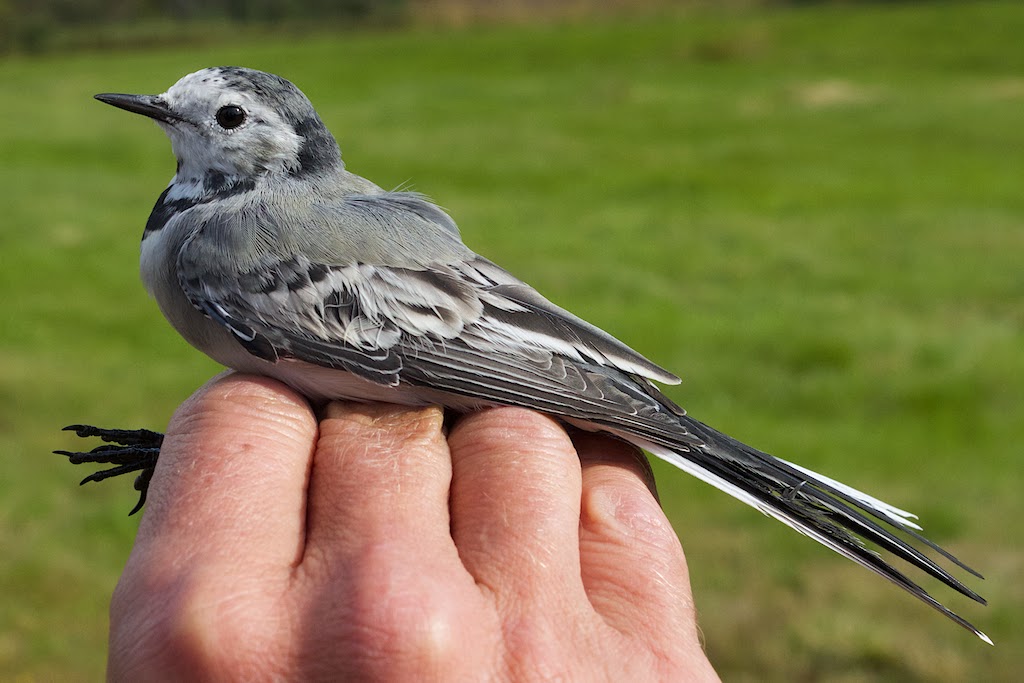It has been a cold day today because of the chilly light winds. Temperatures never rose above double figures. We were on site and ready to go at 03.45am. I was vert tired because it was rumoured there might be an Aurora
Out of interest we have two major areas where we set the nets. One area has 4 x 60ft's in a line and perpendicular to that 2 x 60 nets. The scrub in this area is suitable for 9ft high nets. The other area is in a scrub area just back from the sea shore and here we have 3 shelf 6ft nets set in a square and a further 4 nets in pairs at random to the square in various suitable places.
It was again a slow start put picked up after a couple of hours. In terms of numbers and species today it was even better than yesterday as it included some waders from the extra nets we put up on the beach
The total birds caught and processed were:
Willow Warbler 36, Sedge Warbler 3, Common Redpoll 62, Fieldfare 1, Redwing 19, Meadow Pipit 60, Bluethroat 54, Reed Bunting 36, Red Throated Pipit 1, Brambling 10, Greenfinch 5, Great Tit 6, Harrow Sparrow 11, Little Stint 1, White Wagtail 1, Lapland Bunting 17, Redstart 1, Dunlin 9, Ring Plover 3, Wheater 2, Chiffchaff 2, Willow tit 1, Arctic Redpoll 3, and Dunnock 3. 347 birds in total of 24 species.
The White Wagtail was a first for me again. Can't believe how many new birds I have had in such a short time. Such a smart bird with a shield of black on its breast.
Ring plover I have ringed before. This is a juvenile and we caught 3 today all youngsters. We put up some nets on the beach today and besides the Ring Plover we also caught Dunlin and Little Stint.
Sedge warblers are stunning. After ringing and processing this bird it just sat on my fingers for a few minutes before flying away. Sara managed to take this picture for me sitting on my hand.
This is a Redstart, the second bird in the last two days. It was aged as a 3 male. There were male characteristics starting to show through this years moult indicating it would be a male.
The pictures above and below are Redpoll, what are we doing? We are looking at correlating phenotype with genotypes (Is it what it looks like on the tin).
Tomorrows another day. The difference may be trying to catch more waders without scarfing the our mist net results of today.
Further information from our Norwegian blog http://varangerringing.blogspot.co.uk






No comments:
Post a Comment